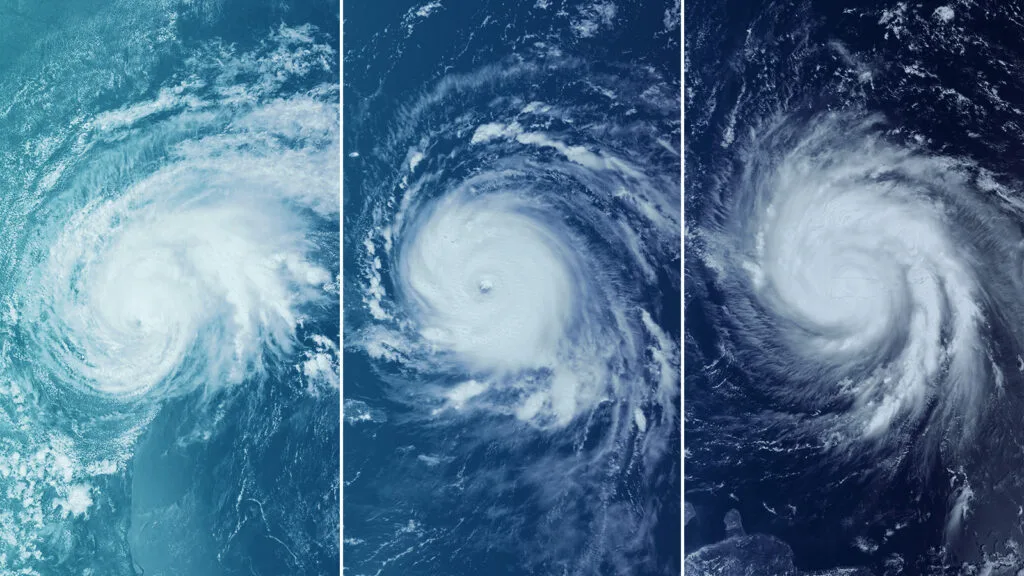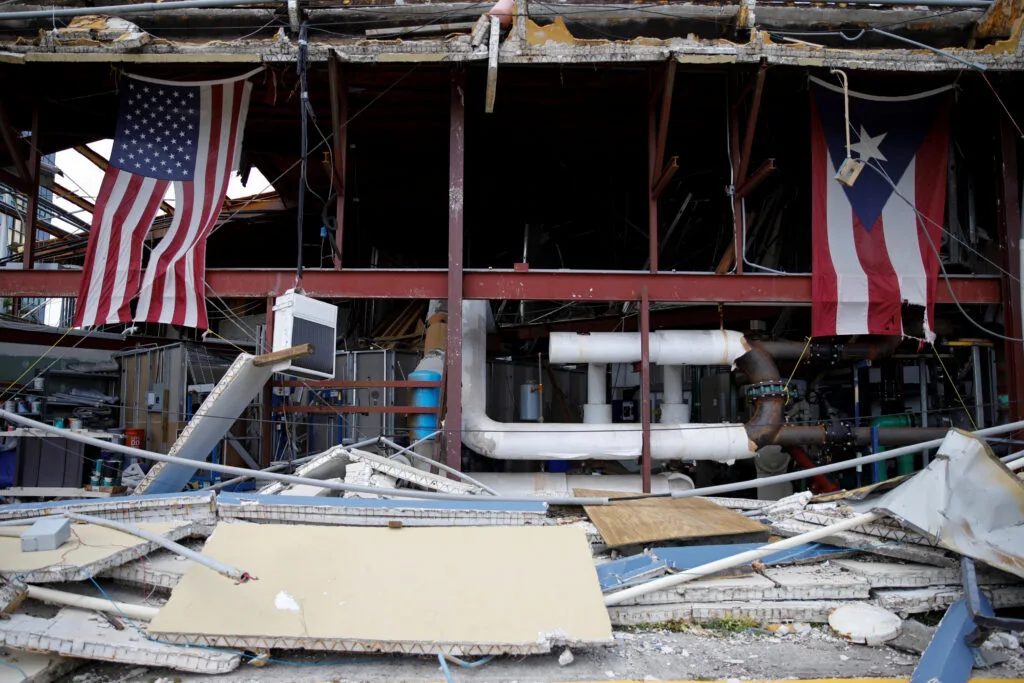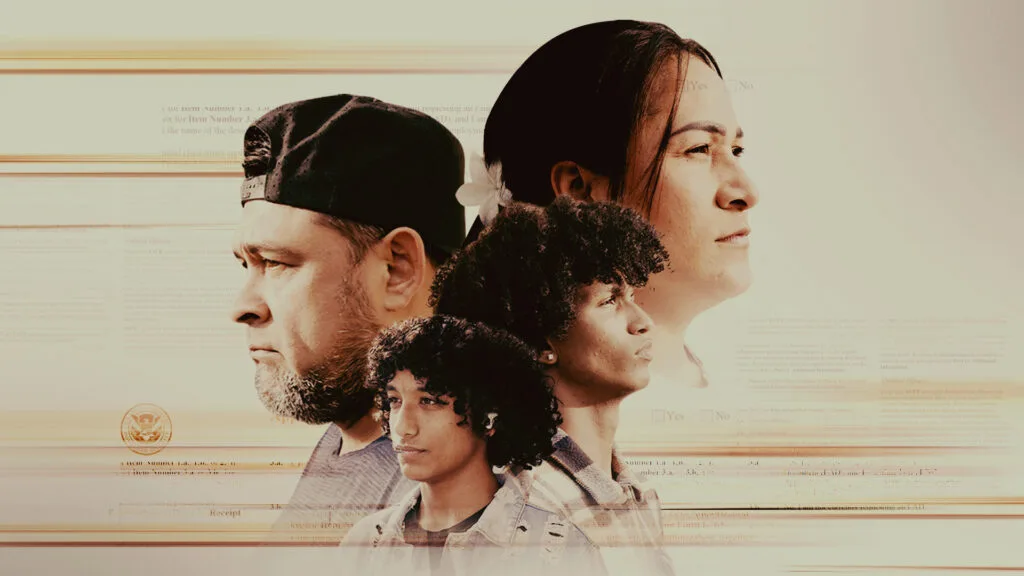How the Response To Hurricane Maria Compared to Harvey and Irma

May 1, 2018
Share
The 2017 hurricane season was unlike any other. First came Hurricane Harvey, followed a little more than two weeks later by Hurricane Irma. The storms swept through multiple states and caused an estimated $175 billion in damages. Then came Maria, which damaged or destroyed more than a third of homes on Puerto Rico and crippled the island’s aging power grid.
“I remember looking at people, and I knew that there was going to be nothing when they went outside — no electricity, no water,” said Carmen Yulin Cruz, the mayor of San Juan, in an interview for the FRONTLINE/NPR investigation Blackout in Puerto Rico. “And it is the cries that went unheard that still haunt me at night.”
Since Maria made landfall seven months ago, more than 100,000 Americans are still without power on the island. The Federal Emergency Management Agency has defended its efforts in Puerto Rico, but the FRONTLINE/NPR investigation found that the response to Maria lagged behind the actions taken following Harvey and Irma in several key ways. Here’s a look back at how the responses compared.
Loading…
The Trump administration was quick to approve disaster declarations for the areas affected by Harvey, Irma and Maria. Four days after both Harvey and Irma made landfall, President Donald Trump traveled to Texas and Florida, respectively. Thirteen days after Maria hit, he arrived in Puerto Rico.
Like Harvey and Irma, Maria slammed Puerto Rico as a Category 4 storm, but it carried the strongest winds of the three. The island, already struggling from a massive debt crisis, was pushed even further into disarray.
Key emergency supplies were already in short supply before Maria hit, according to FEMA documents and communications obtained by FRONTLINE and NPR. And in the immediate response, basic provisions like food, water and tarps were dangerously low.
Loading…
In Puerto Rico, the need for tarps was especially severe. With nearly half a million homes damaged or destroyed, FEMA needed hundreds of thousands of tarps. But just 5,000 were delivered nine days after the storm hit — 20 times less than what was provided after Irma and four times less than after Harvey.
“We had problems getting everything,” Michael Byrne, the FEMA federal coordinating officer for Puerto Rico, told FRONTLINE and NPR. “When you have to ship it, when you have to add seven days or something longer to everything that you want to bring in … it’s definitely a challenge.”
Loading…
Another challenge facing the agency was getting federal workers in place to provide disaster relief. After all three storms, FEMA deployed thousands of personnel to affected states and territories. But by the time Maria hit Puerto Rico, FEMA was stretched so thin that half of its staff on the island were trainees or unqualified for the disaster work needed on the island.
Nine days after Maria made landfall, there were around 10,000 federal staff representing 36 departments and agencies on the ground in Puerto Rico and the U.S. Virgin Islands, according to FEMA. Around a month after the storm, 16,500 federal, civilian and military personnel were in Puerto Rico.
By comparison, nine days after Hurricane Irma, 22,314 people had been deployed for disaster relief, according to FEMA documents. Just over a week after Harvey hit, three times as many federal staff, compared to Maria, had been sent out in response to the storm.
Eventually, 19,000 personnel would be deployed to Puerto Rico, according to FEMA.
Loading…
In the aftermath of the three storms, FEMA worked to provide victims with housing assistance to help repair their homes. Under its Individuals and Households Program, the agency can provide up to $33,300 in financial assistance for those impacted by the storms, but the amount doled out has varied. So far in Puerto Rico, only about half of those who have applied for housing assistance from FEMA have received it. That’s largely because many Puerto Ricans lack the property records required by the agency to receive aid.
On average, FEMA has provided around $2,974 in individual housing assistance on the island. Survivors have until June to register for that assistance.
In the months since Maria, Puerto Ricans are still reeling from the devastation inflicted by the storm.
To date, Congress has approved nearly $30 billion in recovery assistance for Puerto Rico — less than a third of the almost $94 billion that Puerto Rico’s government has requested. With hurricane season starting next month, the island’s future remains uncertain.
“I still see that practically my whole community is sleeping on their balconies. There are people living in shelters,” Jossie Lozada, a Puerto Rican resident, said in an January interview for Blackout in Puerto Rico. “There are people living in their cars … my community has emptied out because everyone is leaving.”
Kate McCormick and Emma Schwartz contributed to this report.

Related Documentaries
Latest Documentaries
Related Stories
Related Stories
Policies
Teacher Center
Funding for FRONTLINE is provided through the support of PBS viewers and by the Corporation for Public Broadcasting. Additional funding is provided by the Abrams Foundation; Park Foundation; the John D. and Catherine T. MacArthur Foundation; and the FRONTLINE Journalism Fund with major support from Jon and Jo Ann Hagler on behalf of the Jon L. Hagler Foundation, and additional support from Koo and Patricia Yuen. FRONTLINE is a registered trademark of WGBH Educational Foundation. Web Site Copyright ©1995-2025 WGBH Educational Foundation. PBS is a 501(c)(3) not-for-profit organization.



















